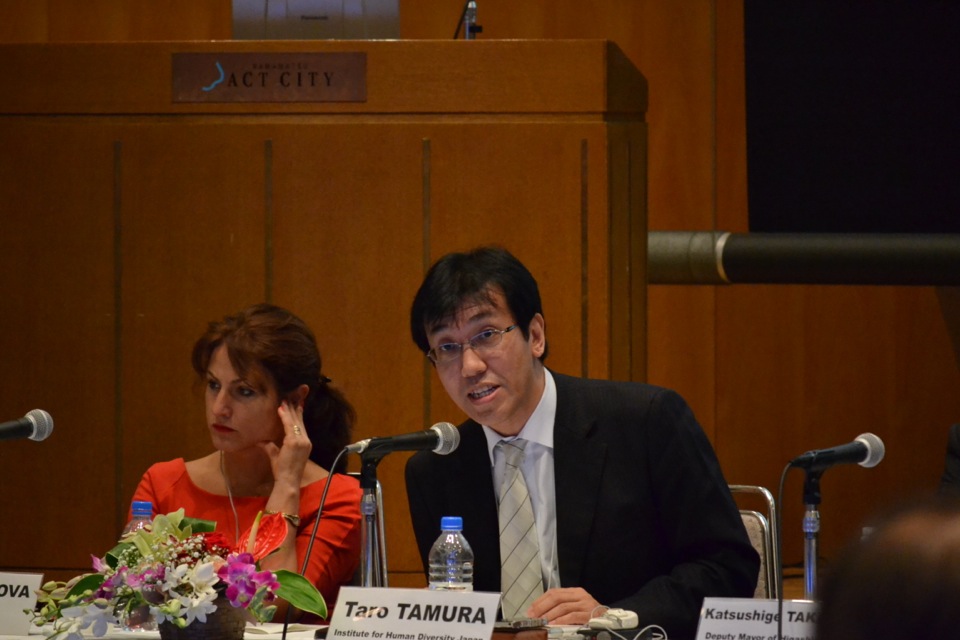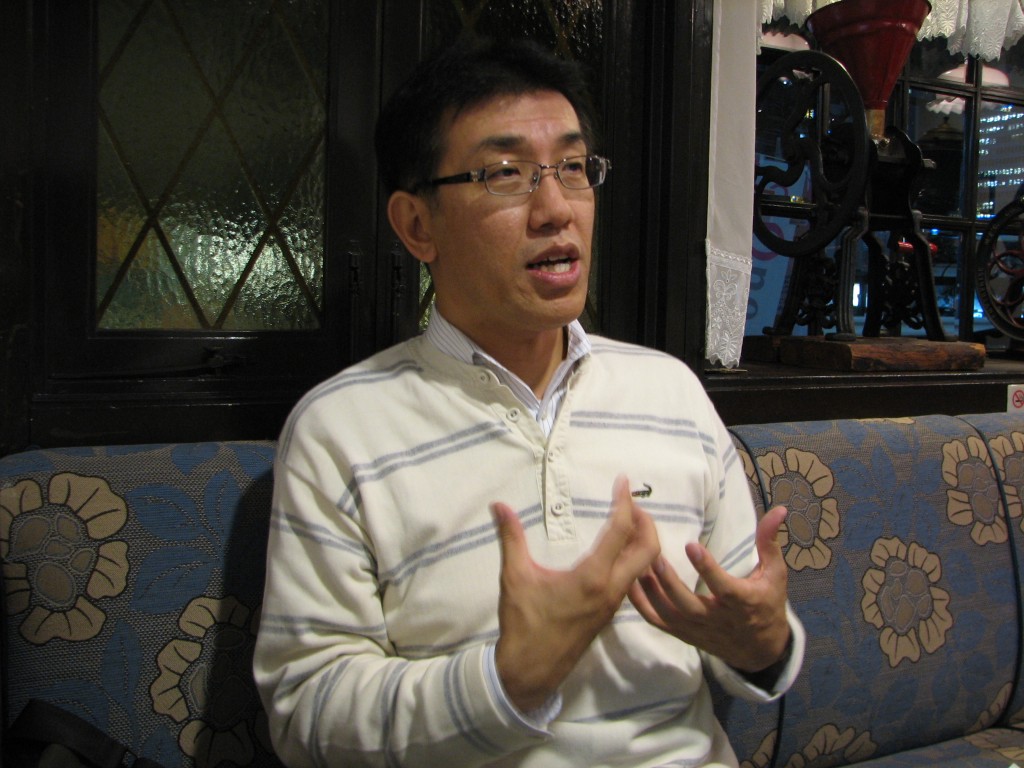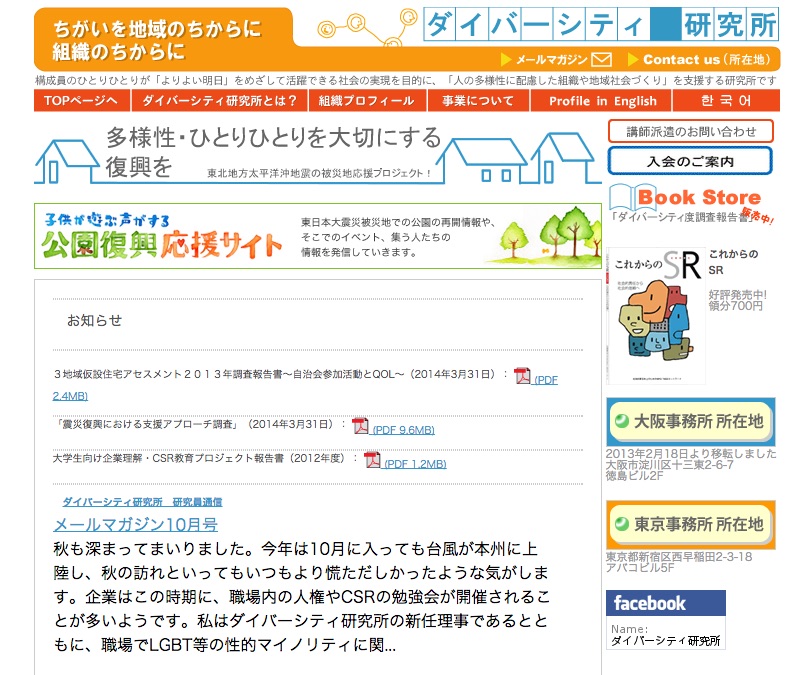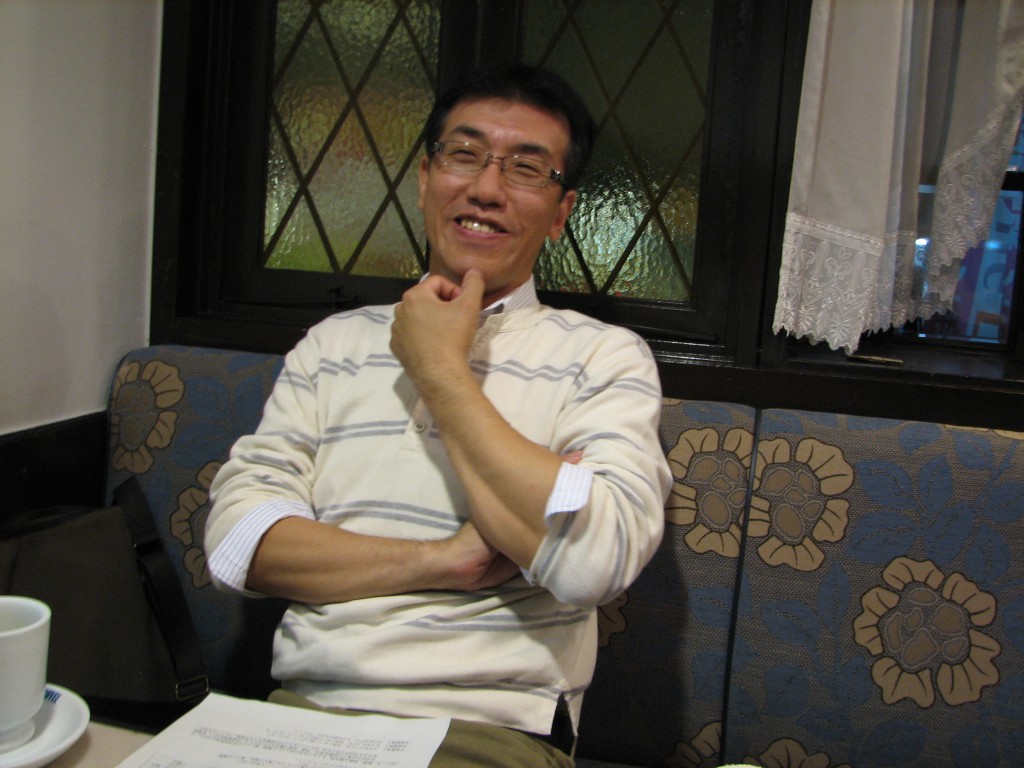![]() social entrepreneur
social entrepreneur
 JP | EN
JP | EN
 JP | EN
JP | EN

As the demands of our society and lifestyles diversify, an organization with diverse human resources possesses a distinct advantage in providing the services that its customers demand. The value of diversity is something that is best learned through experience. Our experience, for instance, of living in a community as a foreigner, raising children, or giving or receiving care makes it clear that diverse human resources will only increase in value in the future. We believe that a diverse organization is supple and strong. It is vital to implement a strategy to incorporate a diverse membership into your organization.
At Diversity Japan, we do not limit ourselves to working towards equal employment opportunities or encouraging people to think about their work-life balance. We try to offer a "prescription" for those seeking to take advantage of the inherent opportunities offered by diversity to make their community or organization more "supple and strong."
I first thought an earthquake struck the Tokai region, where a major earthquake had long been predicted. I was sleeping at home in Itami when the shake arrived. The quake jolted the bed with me in it so violently that I thought I would die. The light didn't work, nor did the TV or radio. Anyway, I went to Itami station to take a train to get to work. But a worker of a station kiosk said, "No, you’re kidding. There are no trains running today!" Then I realized for the first time that my hometown was in a serious situation.
There was a huge information gap between foreigners who spoke English and those who did not. While English-speaking foreigners had already learned in bulletins written in English that they needed to go to ward offices to receive subsidies and therefore called the hotline to ask for advice about required procedures, non-English-speaking foreigners, having no access to such information, first talked about a more fundamental problem: "We need money!" Therefore, we had to figure out for each person what support he or she needed.
 Photo:Mr. Tamura looking back on January 17, 1995
Photo:Mr. Tamura looking back on January 17, 1995They were in need of help not only due to the earthquake, but because they always have had problems in their daily lives. I noticed that this social issue was revealed only after the earthquake put them in a more difficult situation. To tackle this overlooked problem, I set up an organization named Multicultural Center in July, 1995. In 2006, the organization evolved into the current Institute for Human Diversity Japan, for the purpose of making communities more heterogeneously tolerant as well as providing support to foreign residents with problems.

We start by helping employers understand the fundamental idea of diversity. Recently, a greater emphasis has been placed on utilizing women's career skills in an effort to promote diversity. However, providing fair employment opportunities and embracing diversity are not the same, although they may appear similar. To put it extremely, a fair screening process results in employment unduly weighted towards women if successful applicants are only women. Diversity in the workplace in such a case will be reduced. Thus, we first need to change employment systems.
To take another example, diversity in the workplace can be promoted by creating such a work environment that allows employees to work on a three-day-week basis for the care of their long-standing diseases, or be absent from work if their child has a fever. Being diverse is in a sense being unequal. So much tolerance as to accept it will bring diversity to society.
 Photo:Mr. Tamura says that diversity involves inequality in a way, but we need to create a tolerant society that embraces the "unequal" diversity.
Photo:Mr. Tamura says that diversity involves inequality in a way, but we need to create a tolerant society that embraces the "unequal" diversity.College students from Kobe travel to the Tohoku region to volunteer in the Great East Japan Earthquake-stricken area. But, they have little to tell affected people or those assisting them. They cannot answer questions like, "What was done to address situations like this in Kobe?" because they don't have knowledge based on their own experience. So, I think it is now essential to pass down what we have learned from the Great Hanshin-Awaji Earthquake and further accumulate knowledge to share with people in other disaster-hit areas while rethinking the future direction of developing the city of Kobe. I also hope for administrative commitment in this regard.
 Photo:Support activity in Tohoku–4: Diversity Japan staff have provided reconstruction assistance in the Tohoku region. They offer a silent prayer for the Great East Japan Earthquake victims.
Photo:Support activity in Tohoku–4: Diversity Japan staff have provided reconstruction assistance in the Tohoku region. They offer a silent prayer for the Great East Japan Earthquake victims.  Photo:Support activity in Tohoku–1: They also support joint volunteer activities by students from Kobe and other areas of Kansai
Photo:Support activity in Tohoku–1: They also support joint volunteer activities by students from Kobe and other areas of KansaiI want more people to become exponents of diversity. I think my duty is to stay in business and develop young people who will carry on our activities. For that reason, I hope for Kobe to provide an environment favorable to community and business activities in which motivated young people are given opportunities to play an active part.
Taro Tamura
Taro Tamura was born in Itami City, Hyogo Prefecture. As the representative director of the Institute for Human Diversity Japan (Diversity Japan), Tamura has engaged in developing diversity strategies to be integrated in CSR*1 for companies. In response to the Great East Japan Earthquake in 2011, Diversity Japan was involved in launching the nonprofit organization Special Support Network Kansai and the “Joint Project to Support Disaster Sufferers through Coordination with Nonprofits (Tsuna-Pro)”, for which it served on its steering committee. Currently, Tamura also serves as a part-time policy advisor to the Japan Reconstruction Agency to promote efforts to rebuild the quake-stricken Tohoku region. When the Great Hanshin-Awaji Earthquake hit in 1995, he, then 23, was at home in Itami City. He now lives in Chuo Ward, Kobe City.
(*1) CSR: Corporate social responsibility